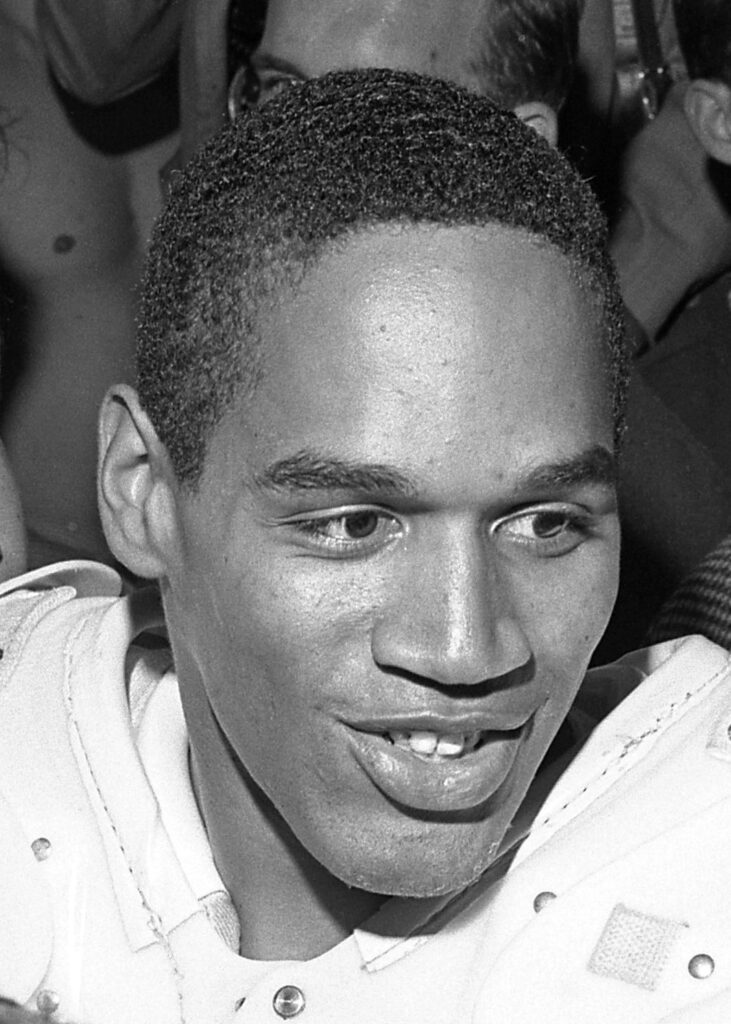Ever scrolled through your old school photos and just cringed a little (or a lot!)? The awkward poses, the questionable fashion choices, that forced smile trying to look cool when you really just wanted to be anywhere else? We’ve all been there! It’s a universal experience, this journey from fresh-faced kid to, well, *you*.
But imagine if those childhood snaps weren’t just for your family’s amusement, but became treasured glimpses into the past of someone who would one day command stages, sell out arenas, and inspire millions. We’re talking about rock stars, the legends whose names echo through music history. Before the wild hair, the signature makeup, the stage presence that could fill a stadium, they were just kids, navigating school, family, and maybe even a few awkward yearbook photos.
Planet Rock rolls back the decades to take a look at 28 famous rock stars before they were famous, and we’ve gathered some of the absolute gems from those early days. We’re about to dive deep into the fascinating origin stories of some of your favorite musicians, dusting off forgotten yearbooks and family albums to reveal what these icons looked like, and who they were, long before they became the worldwide sensations we know and love. Prepare to be surprised, delighted, and maybe even a little bit nostalgic for your own awkward past!

1. **Joan Jett**
Before she became the undisputed ‘Godmother of Punk’ and taught us all to love rock and roll, Joan Jett was just Joan Marie Larkin, born in 1958. Growing up in Wynnewood, Pennsylvania, and Rockville, Maryland, Joan’s journey to rock royalty wasn’t exactly a straight line. Like many future rebels, her early life offered few clues to the iconic, leather-clad rocker she would become.
Joan started her musical journey with the guitar when she was just 13 years old. You might think, ‘Aha! The spark!’ But here’s the kicker: she actually quit her lessons pretty quickly. Why, you ask? Because she wasn’t interested in strumming folk songs. It seems even at a young age, Joan had a clear vision of the kind of music she wanted to play, and folk just wasn’t cutting it for her budding rock and roll heart. This early defiance foreshadowed the independent spirit that would define her career.
As a teenager, Joan Marie Larkin made a pivotal move to Los Angeles, a city synonymous with dreams and transformation. It was here that a significant change occurred, one that cemented her path toward rock stardom: she changed her name. Deciding on ‘Jett’ wasn’t just a whim; it was a conscious decision to sound more like a rock star, a powerful declaration of her future identity. This renaming was a symbolic shedding of her former self and an embrace of the persona that would soon captivate the world.
This simple act of renaming herself to Joan Jett speaks volumes about her determination and belief in her rock and roll destiny. It wasn’t about waiting for fame to find her; it was about actively crafting her identity to align with her aspirations. From quitting folk lessons to choosing a stage name, every early step pointed towards a powerful individual ready to carve her own niche in the music world, long before she penned ‘I Love Rock ‘n’ Roll’ and inspired generations.
Read more about: From Tiny Talents to Tinseltown Titans: 14 Child Stars Who Conquered Hollywood and Won Our Hearts

2. **Paul McCartney**
Imagine a six-year-old boy, sitting innocently in the grass with his younger brother Mike, completely unaware that he would soon become one-half of the most legendary songwriting duos in history and a global icon. That’s James Paul McCartney, born in 1942 in Liverpool, England, whose early life was a humble yet musically rich environment that laid the groundwork for his astonishing career.
Paul’s family, while on the lower end of the working-class spectrum, provided an incredibly supportive home for their children. It wasn’t about material wealth, but about encouragement and nurturing talent. Crucially, his father was a musician himself, a significant influence who actively fostered a love for music in his kids. He didn’t just passively enjoy music; he encouraged Paul and Mike to take music lessons, a foundational step that would prove transformative for young Paul.
This parental encouragement wasn’t just about learning an instrument; it was about instilling a passion and providing the tools for creative expression. For a young Paul, growing up in a city that would soon become the epicenter of a musical revolution, having a musician father who advocated for music lessons was like planting a seed in fertile ground. It allowed his natural talent to blossom and gave him the early exposure and discipline needed to master his craft.
So, while the image of a young Paul sitting in the grass might seem unremarkable, it represents the quiet beginnings of a life destined for extraordinary heights. The loving, supportive, and musically inclined family environment in Liverpool provided the perfect incubator for the future Beatle. His father’s foresight in encouraging music lessons ensured that the world would eventually hear the melodies and lyrics that would define an era.
Read more about: The Perpetual Motion Machine: Why Hollywood Can’t Quit Its ‘It Boy’ Obsession and the Seven Faces Dominating Your Screens
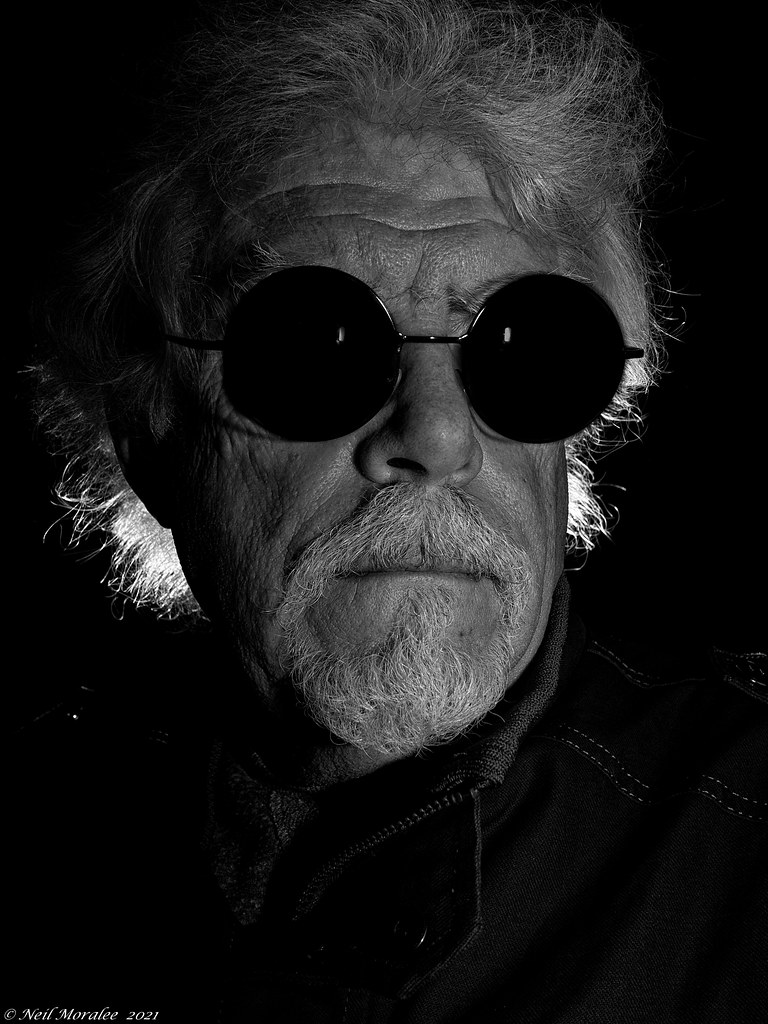
3. **Ozzy Osbourne**
Before he was the Prince of Darkness, the madman of metal, and the frontman for Black Sabbath, Ozzy Osbourne was just a young boy growing up in the industrial heartland of Birmingham, England. His early life was far from glamorous, a stark contrast to the extravagant stage persona he would later adopt. His family of eight squeezed into a small, two-bedroom home, illustrating a childhood defined by necessity and close quarters.
Despite the challenging living conditions, young Ozzy, whose real name is John Michael Osbourne, found an early outlet for expression: acting. While in school, he participated in musicals, a surprising tidbit for fans who know him for his roaring vocals and intense stage presence rather than Broadway show tunes. This early foray into performance hints at a natural inclination for the spotlight, even if the genre was a world away from heavy metal.
The catalyst that truly propelled Ozzy towards music, however, was none other than The Beatles. He explicitly credited them for inspiring him to get into music, a testament to the Fab Four’s widespread and profound influence, reaching even those destined to forge a darker, heavier sound. The phenomenon of The Beatles showed a young Ozzy the power and potential of a musical career, igniting a passion that would redefine rock.
After leaving school at 15, Ozzy’s path wasn’t immediately paved with platinum records. He worked a series of odd jobs, experiencing the grittier side of life, and even ran into trouble with the law. These experiences, though difficult, undoubtedly contributed to the raw, authentic edge that would characterize his music. It was through this crucible of working-class life and youthful rebellion that he eventually formed his first band, setting the stage for Black Sabbath and the birth of heavy metal.
Read more about: From Jail Cells to Platinum Sales: 14 Musicians Whose Secret Criminal Pasts Will Blow Your Mind

4. **Jim Morrison**
The enigmatic frontman of The Doors, Jim Morrison, was a restless soul long before he penned poetic lyrics and captivated audiences with his intense stage presence. Raised as a military brat, James Douglas Morrison’s childhood was a series of relocations, taking him and his family to places like Melbourne, Florida, San Diego, California, and Kingsville, Texas. This nomadic upbringing undoubtedly contributed to his later bohemian spirit and transient artistic nature.
A profoundly impactful event in Morrison’s early life occurred when he was just a toddler: he witnessed a car accident. This traumatic experience left a lasting impression on him, so much so that it inspired a significant portion of his later work, including the haunting lyrics of the song ‘Peace Frog.’ This early encounter with mortality and chaos clearly shaped his perspective, fueling the dark and philosophical undercurrents found in The Doors’ music.
Beyond his experiential inspirations, Jim Morrison was also a voracious reader, a true intellectual at heart. He possessed a deep love for the works of poets and philosophers, delving into complex ideas that would later surface in his own lyrical craftsmanship. This intellectual curiosity and literary appreciation were crucial components of his developing artistic sensibility, setting him apart as a rock star whose words were as powerful as his music.
The combination of a transient childhood, a traumatic early memory, and a profound intellectual curiosity painted a complex portrait of the young Jim Morrison. These formative experiences weren’t just footnotes in his biography; they were the very bedrock upon which his poetic, often dark, and deeply philosophical artistry was built. He wasn’t just a singer; he was a poet and a philosopher who happened to be in a rock band, shaped by a childhood that was anything but ordinary.
Read more about: Jim Edgar’s Passing Prompts a Comprehensive Look at the Enduring Legacy of a Name: ‘Jim’
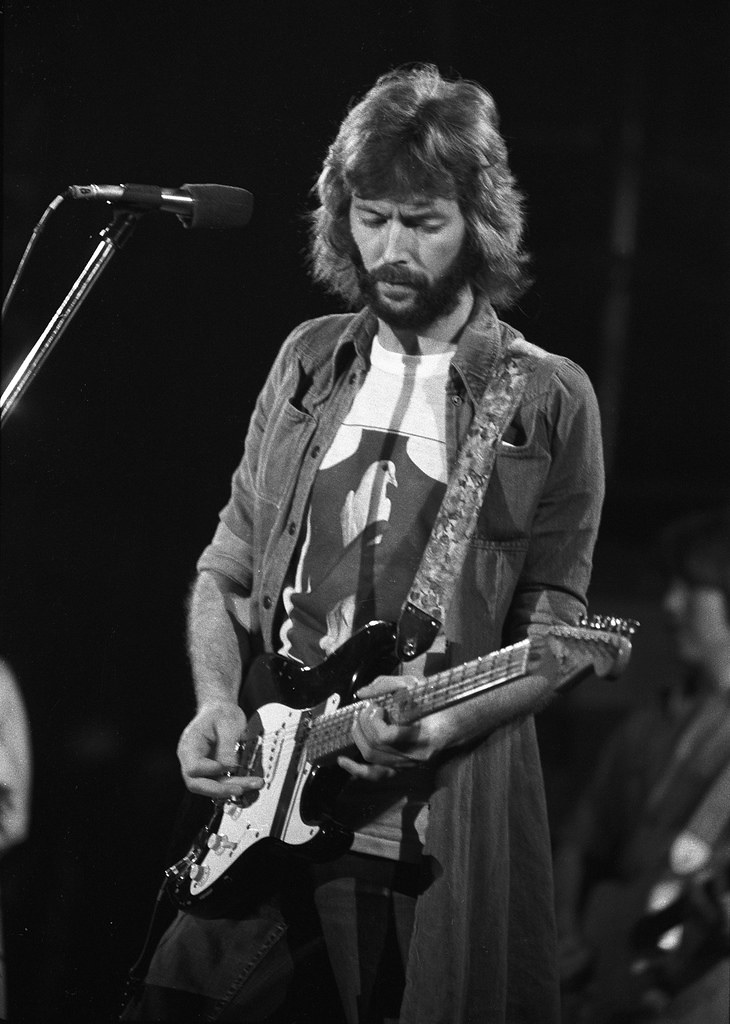
5. **Eric Clapton**
Known as ‘Slowhand’ and one of the most influential guitarists of all time, Eric Clapton’s early life carried a poignant secret. His mother was remarkably young, just 16 years old when he was born, and for much of his childhood, Eric grew up believing she was actually his older sister. This unique family dynamic, where he was mostly raised by his grandmother and stepgrandfather, undoubtedly shaped his early emotional landscape and quest for identity.
The revelation of his true parentage must have been a complex experience, coloring his understanding of family and belonging. However, it was another significant event, his 13th birthday, that truly set him on his legendary musical path. On this day, he received a Hoyer guitar, a gift that would ultimately change his life and the course of rock music forever. The initial spark might have been just a new toy, but it quickly evolved into something far more profound.
While he initially struggled with the instrument, a couple of years later, Eric became utterly obsessed with that Hoyer guitar. This obsession wasn’t just a passing teenage fancy; it was a deep dive into the world of music, a relentless pursuit of mastery. Ever since that point, his focus narrowed almost exclusively on music, particularly inspired by the raw, emotive power of the blues. The blues became his language, his solace, and his artistic foundation.
From a challenging family revelation to a transformative birthday gift, Eric Clapton’s early years were a crucible that forged a true musical savant. His dedication to the guitar and his immersion in the blues genre were not just career choices; they were deeply personal responses to his life experiences. These beginnings cemented his destiny as a blues rock legend, driven by an unwavering passion that started with a single guitar and a deep connection to a powerful musical tradition.
Read more about: 14 Pivotal Moments That Totally Reshaped the ’70s – And Why They Still Echo Today!
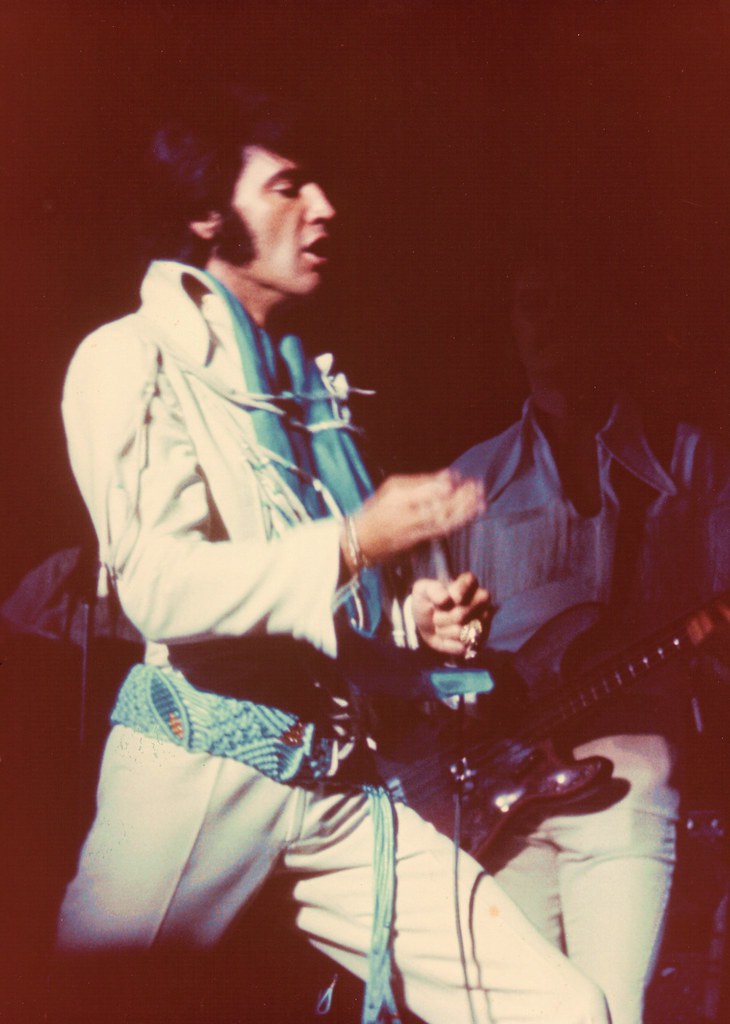
6. **Elvis Presley**
The King of Rock and Roll, Elvis Presley, emerged from incredibly humble beginnings, a testament to his extraordinary talent and destiny. Born on January 8, 1935, in a modest two-room home in Tupelo, Mississippi, Elvis’s early life was a far cry from the opulent Graceland he would later inhabit. He shared a close bond with his parents, growing up in a loving but economically struggling family that often relied on government food assistance.
Despite the financial hardships, music was an early and constant presence in young Elvis’s life. His path towards becoming a performer received a pivotal push when his teacher encouraged him to enter a singing contest. This early validation of his vocal abilities, even in a small-town setting, likely fanned the flames of his nascent musical aspirations. It was one of those small moments that, in retrospect, seemed to whisper of a much grander future.
As a child, Elvis was often described as a loner, a quiet boy who perhaps found solace and expression in his own world of sound. However, one thing was undeniably clear: he was ‘crazy about music.’ This intense passion transcended his quiet demeanor, signaling a deep, innate connection to rhythm and melody. It was a passion that would eventually burst forth, transforming him from a shy boy into a global phenomenon.
From a simple two-room shack in Mississippi to becoming an unparalleled cultural icon, Elvis Presley’s journey is a powerful narrative of raw talent meeting unwavering passion. His humble upbringing and early experiences, including his teacher’s encouragement and his profound love for music, were the essential building blocks. They reveal a King who was, at his core, a dedicated artist shaped by his roots and an undeniable, magnetic connection to music.
Read more about: Waylon Jennings: Riding the Storm, Forging an Outlaw Legacy in Country Music

7. **Steven Tyler**
Before he was the charismatic, scarf-wearing frontman of Aerosmith, Steven Victor Tallarico, famously known as Steven Tyler, entered the world on March 26, 1948, in Manhattan, New York. Far from the raucous rock stages, his early environment was infused with a different kind of music: classical. His father was a classical musician who also taught high school students, providing a sophisticated musical backdrop to young Steven’s formative years.
While his father steeped him in classical sounds, it was a different kind of music that truly captured Steven’s teenage imagination. One of his biggest musical influences during his adolescent years was none other than The Rolling Stones. This legendary British band, with their rebellious energy and blues-infused rock, struck a chord with Steven, pulling him towards a more electrifying and visceral sound than the classical world his father inhabited.
The influence of The Rolling Stones wasn’t just about their sound; it also extended to their image. Steven was even told that he resembled Mick Jagger, a comparison that must have thrilled the aspiring rocker. He also developed a profound appreciation for the music written by Keith Richards, recognizing the genius behind the guitar riffs and song structures that made The Stones so iconic. These influences clearly shaped his aspirations for his own rock and roll identity.
So, from a New York upbringing steeped in classical music to being profoundly inspired by the raw energy of The Rolling Stones, Steven Tyler’s early life was a fascinating blend of influences. His father’s musical background provided a strong foundation, while the swagger and sound of Jagger and Richards ignited his passion for rock. These distinct elements converged to help create the flamboyant, powerful vocalist who would lead Aerosmith to superstardom, a true testament to diverse inspirations shaping a unique legend.
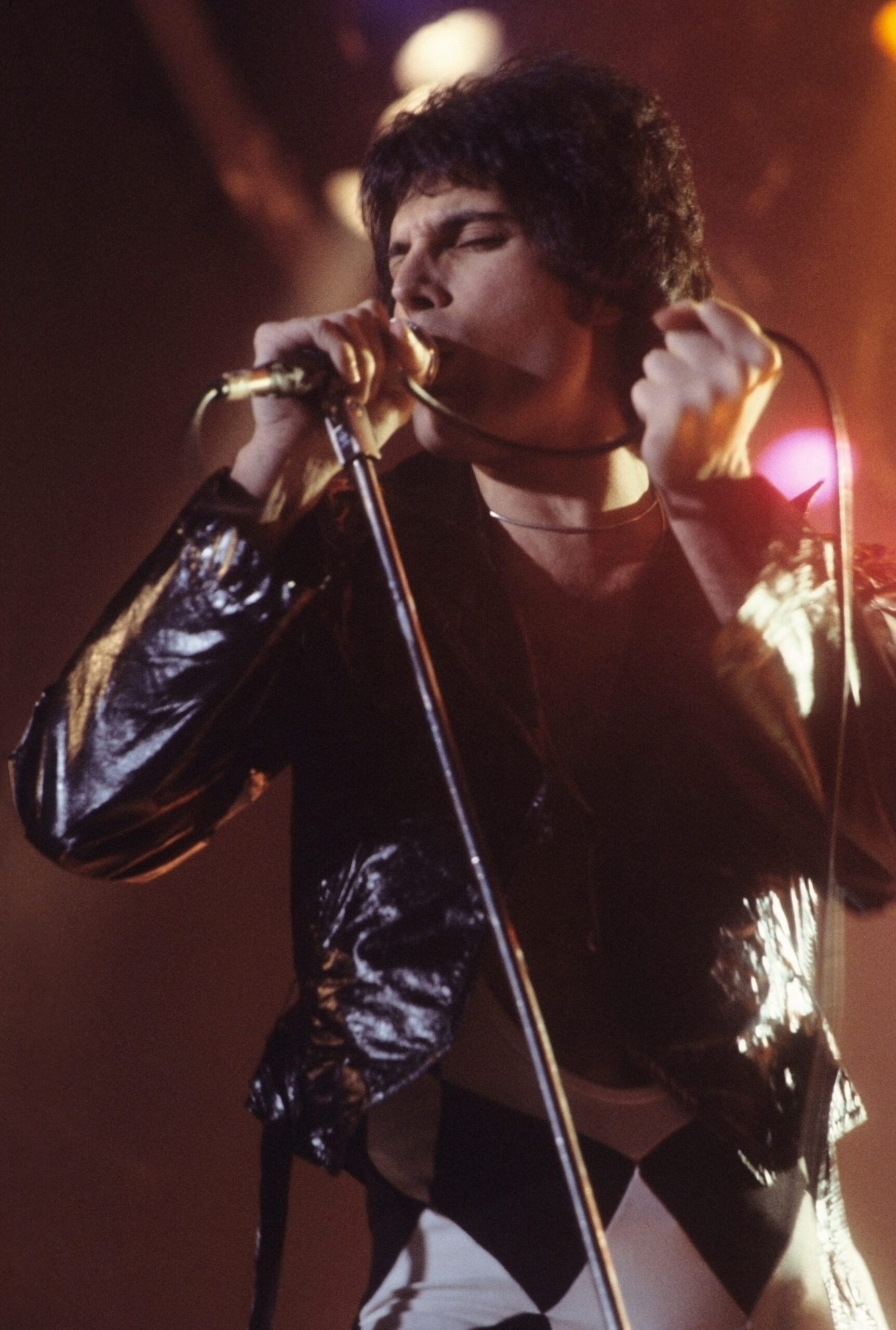
8. **Freddie Mercury**
Imagine the electrifying stage presence, the boundless energy, and that incredible vocal range that defined Freddie Mercury. Before he was the iconic frontman of Queen, commanding stadiums and captivating millions, he was Farrokh Bulsara, born on September 5, 1946, in Zanzibar, which is now Tanzania. His early life was a world away from the rock and roll spectacle, yet it was here that the first seeds of his musical genius were sown.
Freddie spent the majority of his childhood years immersed in the vibrant culture of India. This period proved foundational for his musical development, as it was in India that he began to cultivate his skills. He started taking piano lessons when he was just seven years old, a pivotal step that would unlock his prodigious talent and provide him with the instrumental mastery that later underpinned Queen’s complex musical arrangements.
His passion for music wasn’t just a quiet hobby; it quickly blossomed into a desire for performance and collaboration. By the tender age of 12, Freddie had already taken the plunge and formed his very first band, aptly named “the Hectics.” This wasn’t some avant-garde experimental group; they were a rock and roll cover band, jamming to the hits of the day.
This early band experience, jamming out to covers, was more than just child’s play. It was in the Hectics that Farrokh could experiment with his vocal delivery, begin to understand group dynamics, and truly immerse himself in the sheer joy of creating music with others. This hands-on, formative period provided him with invaluable practical skills that would later be foundational to his legendary career.
So, while the world would later know him as the flamboyant, incomparable Freddie Mercury, his journey began far from the glittering stages of Wembley, in the quiet classrooms of India and with his first rock and roll cover band. It just goes to show you that even the most electrifying performers started small, building their craft piece by piece, long before their iconic personas took over the world.
Read more about: Skip the Stream: 5 Biographical Films So Off-Key, Even Their Subjects Couldn’t Stomach the Story.

9. **Mick Jagger**
Can you picture a young Mick Jagger, far from the strutting, flamboyant rock god we know and love? Long before he was commanding stages with The Rolling Stones, he was Michael Philip Jagger, growing up in a middle-class family in Kent, England. His early life was quite conventional, with a strong emphasis placed on academics and sports, a stark contrast to the rebellious image he would later embrace.
While he might have been lacing up his athletic shoes, a different kind of rhythm pulsed within him. Young Mick always harbored a secret, unshakeable passion for singing. He might have been on track for a conventional future, but in his heart, he knew he was destined for the stage, a performer waiting for his moment to explode onto the scene.
Now, for a twist of fate that changed everything: can you believe he actually met his future musical partner, Keith Richards, in elementary school? It sounds like something out of a movie, doesn’t it? This initial connection, though not immediately leading to rock stardom, was the earliest spark of what would become one of the most enduring and iconic partnerships in music history. It’s wild to think that the future Glimmer Twins were once just schoolboys, probably oblivious to the seismic impact they’d have on the world.
Years later, destiny intervened, and Mick and Keith reconnected, cementing their bond over a shared love for American rhythm and blues music. This wasn’t just a casual reunion; it was the confluence of two formidable talents. Their combined vision, their deep musical understanding, and their undeniable, electrifying chemistry soon led to the birth of a band that would become synonymous with rock and roll itself: The Rolling Stones.
This evolution from a conventional schoolboy with a hidden vocal talent to a global rock icon perfectly illustrates the power of following your innate calling. Mick Jagger’s journey is a vibrant reminder that sometimes, the biggest rock stars come from surprisingly normal backgrounds, only to unleash an extraordinary, electrifying presence that completely transforms the landscape of popular music for generations to come.
Read more about: The Unveiling: Farrah Fawcett’s Secret Enduring Love and Other Hidden Hollywood Romances
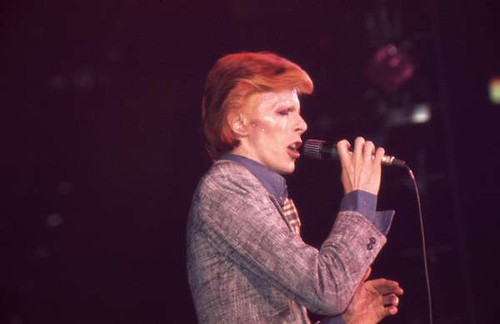
10. **David Bowie**
David Bowie, the chameleon of rock, whose artistry transcended music, fashion, and culture, was once just David Robert Jones. Born on January 8, 1947, in Brixton, London, England, his beginnings were far from the theatrical grandeur that would become his hallmark. However, even in his youth, it was clear he was a child destined for something truly special, a unique spirit waiting to unfurl.
It wasn’t just about raw talent; his early years were a rich tapestry of creative exploration. Young David actively delved into various artistic avenues, participating in choir, dancing, and a plethora of music classes. This diverse engagement across different art forms was instrumental in building a versatile foundation, allowing him to absorb different performance styles and expressions that would later define his groundbreaking, multidisciplinary approach to music and identity.
But for all his youthful artistic ventures, there was a specific moment, a sound that truly flipped a switch in his mind. The definitive turning point, he recalled, was listening to his father’s Little Richard record, specifically the explosive and exhilarating track “Tutti Frutti.” That raw, unbridled energy and the sheer joy of early rock and roll struck a profound chord with young David, igniting a fervent desire to create such powerful, expressive music himself.
It’s truly captivating to imagine the future Starman, the architect of soundscapes and personas, being so deeply moved by the King of Rock and Roll’s exuberant performance. This pivotal auditory experience, sparked by a simple record player, didn’t just inspire him; it set him on an irreversible trajectory towards a life devoted to redefining popular music and challenging artistic boundaries. It was a singular, electrifying revelation.
From a naturally gifted child exploring every artistic nuance to finding his ultimate inspiration in the electrifying sound of Little Richard, David Bowie’s path was one of continuous evolution. His story is a powerful testament to how seemingly small moments of inspiration can blossom into a colossal, iconic legacy, proving that even the most innovative artists begin their journey by absorbing and transforming the sounds that move them most.
Read more about: From Jail Cells to Platinum Sales: 14 Musicians Whose Secret Criminal Pasts Will Blow Your Mind
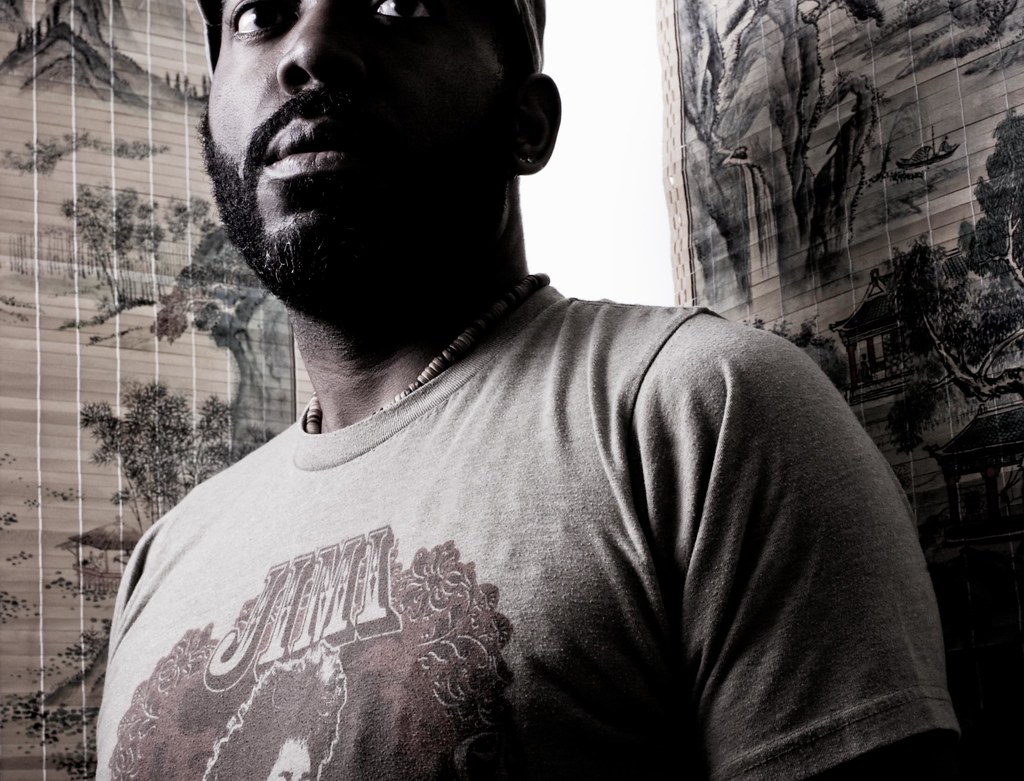
11. **Jimi Hendrix**
Before he was setting guitars ablaze (sometimes literally!) and revolutionizing the very sound of rock, Jimi Hendrix was Johnny Allen Hendrix, a young boy navigating a childhood filled with complexities. A poignant vintage photo captures a three-year-old Jimi with his father, Al, marking their very first meeting since Al had been unable to leave the military when Jimi was born. This early separation undoubtedly cast a shadow, hinting at a childhood that was far from conventional.
It was a year after this significant meeting, in 1946, when Johnny was four, that his name was changed to James ‘Jimmy’ Marshall Hendrix, honoring his father and Al’s late brother, Leon Marshall Hendrix. This renaming was more than just a formal alteration; it was part of his evolving identity, albeit one he couldn’t control at such a young age, adding another layer to his already unique family story.
Despite these early life complexities, Jimi’s world would forever change at the age of 15. This was when he finally picked up a guitar, a moment that, in retrospect, feels like destiny. While some musical prodigies start even younger, Jimi’s relatively “late” start only emphasizes the sheer, unbridled force of his innate genius. Once his hands touched the strings, there was an almost immediate, magnetic connection, and from that point, there was simply no looking back for the future guitar wizard.
His dedication to the instrument was fierce and all-consuming, quickly transforming a budding interest into an unwavering passion that would redefine music itself. Before his meteoric rise to solo stardom, Jimi diligently honed his craft during his late teens and early twenties, cutting his teeth as a backing band member for various artists.
He toured and performed with prominent musicians of the era, including the legendary R&B showman The Isley Brothers and, quite fittingly, the very same rock and roll pioneer Little Richard, whose music had inspired many. These formative years, playing alongside established artists, were absolutely crucial. They helped shape the raw talent, incredible showmanship, and magnetic stage presence that would soon propel Jimi Hendrix to global recognition, cementing his status as an enduring legend and an unparalleled innovator of the electric guitar.
Read more about: 14 Iconic Stars Who Define ‘Stage Presence Goals’ and Left Audiences Absolutely Speechless!

12. **Grace Slick**
Grace Slick, the iconic voice of Jefferson Airplane and a true pioneer of psychedelic rock, had a fascinating journey to rock and roll stardom that took a few unexpected turns. Born Grace Wing on October 30, 1939, in Chicago, Illinois, her early life involved a fair bit of moving around, as her family relocated to several cities across California. This transient upbringing perhaps instilled in her a sense of adaptability and an open mind, qualities that would serve her well in the counter-cultural movement.
Before she was electrifying audiences with her powerful vocals and commanding stage presence in the world of psychedelic rock, Grace actually walked a completely different runway, literally! She worked as a model at an I. Magnin department store. It’s a charmingly unexpected detail, isn’t it? Picturing the future counter-culture icon in the refined world of high fashion truly highlights the incredible versatility and transformative journey of her life.
Beyond her modeling career, Grace also cultivated her creative talents in a quieter, yet significant, way. She immersed herself in composing music specifically for her husband’s short films. This early foray into musical composition, even if it was for a visual medium rather than live performance, showcased her inherent artistic inclination and a nascent talent for crafting melodies and moods. It was a more behind-the-scenes role, but undeniably a crucial stepping stone towards her eventual vocal dominance and songwriting prowess.
The definitive moment that truly nudged Grace towards a full-time music career arrived in a surprisingly mundane form: a simple newspaper article. After reading a piece about the burgeoning San Francisco band Jefferson Airplane, a sudden and profound realization washed over her. It was a moment of absolute clarity, a profound “aha!” that this was her true calling, compelling her to leave the worlds of modeling and film composition firmly behind.
It’s genuinely wild to think that such an iconic and influential career could be sparked by something as everyday as a newspaper clipping! This story perfectly illustrates that inspiration can strike from the most unexpected places and at the most opportune times. Grace Slick’s journey from fashion runways and film scores to the forefront of psychedelic rock is a powerful testament to embracing one’s true artistic destiny, no matter how circuitous the path.
Read more about: Beyond the Horizon: Why ‘Top Gun: Maverick’ Doesn’t Just Soar, It Shatters the Sequel Ceiling

13. **Janis Joplin**
Janis Joplin, whose raw, soulful voice became the definitive sound of a generation, emerged from a childhood that, like many artists, was marked by both attention and a sense of being an outsider. Born and raised in Port Arthur, Texas, Janis often found herself receiving more attention from her parents than her younger siblings. While this might suggest a favored position, it also hinted at a unique and perhaps more demanding early dynamic within her family.
As she navigated her tumultuous teenage years, Janis often found herself grappling with the pain of not quite fitting in. She was frequently “considered an outcast” by her peers, experiencing the sting of social alienation that, for many artists, becomes a potent fuel for creative rebellion. This period of feeling different, coupled with the fact that she never finished college, underscored her path as a young woman determined to forge her own identity outside the conventional societal norms of her time and place.
Yet, it was precisely during these challenging, formative adolescent years that Janis stumbled upon her true calling: a profound and all-consuming love for blues and folk music. This wasn’t merely a passing interest; it quickly became her sanctuary and her voice. She immersed herself completely in these soulful genres, finding deep solace, a potent means of expression, and an undeniable connection to the raw, unvarnished emotions embedded within the music.
This discovery was more than just a hobby; it was a pivotal turning point that provided an essential outlet for her unique sensitivities and her burgeoning, unmistakable talent. Janis didn’t just passively listen to the music; she embraced it with every fiber of her being. She literally “would sing as much as she could,” transforming her bedroom, local coffee houses, or any available space into her personal stage, practicing tirelessly.
This relentless dedication, this deep immersion in the music she loved, born out of a profound desire for connection and self-expression, ultimately shaped her into the powerful, unforgettable, and utterly authentic performer we revere today. Janis Joplin’s journey from an ostracized teenager in rural Texas to an undisputed blues-rock queen is a powerful and inspiring reminder that raw talent, coupled with unwavering authenticity and passionate self-belief, can triumph over any perceived disadvantage, leaving an indelible mark on music history.
Read more about: Kris Kristofferson’s Enduring Journey: A Deep Dive into the Life and Legacy of a Rugged Star
Well, wasn’t that a trip down memory lane? It’s seriously mind-blowing to see these legendary figures, the very architects of rock and roll, looking so incredibly, well, *normal* before they became the icons we worship. From awkward yearbook smiles to childhood snaps, these glimpses remind us that every rock god started somewhere – often in a place far removed from platinum records and sold-out arenas. So next time you’re scrolling through your own cringe-worthy childhood photos, just remember: you might be looking at the next big thing, or at least a really cool human who’s been on an epic journey. Who knows what future legend is currently rocking out in their bedroom, dreaming of stages and anthems, completely unaware of the iconic status awaiting them? Keep those old photos safe, folks, because you never know whose humble beginnings they might reveal!


